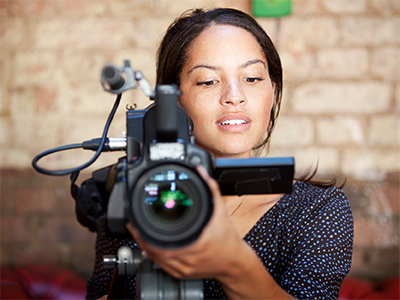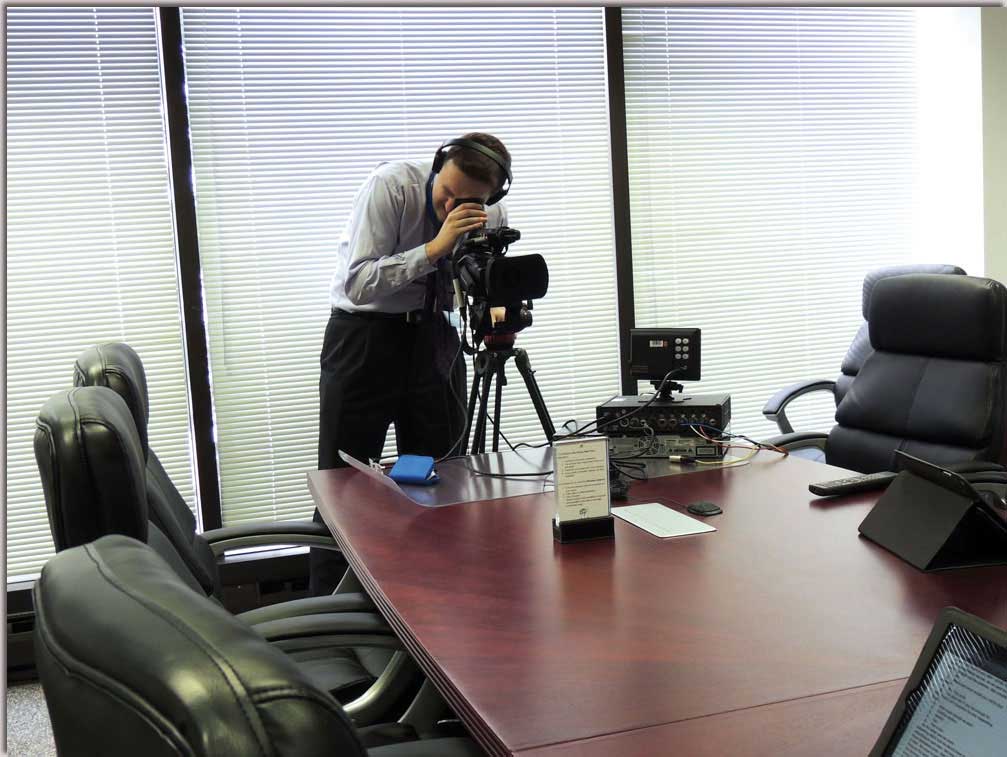The Duty of Lawful Videography in Depositions and Trials
Legal videography has actually become a necessary tool in both depositions and trials, offering a multifaceted approach to recording witness statements. By capturing not just the talked word however also the nuances of non-verbal communication, this tool improves the integrity of testimonies and preserves critical proof for future proceedings (legal videography). As attorneys increasingly acknowledge its value, it motivates a deeper exam of exactly how these aesthetic records can affect juror understandings and test results. What effects might these developments hold for the future of lawful method?

Significance of Lawful Videography
Legal videography plays a critical duty in the documentation and presentation of depositions and trials. This customized area combines technical skills with lawful knowledge to produce a dependable document of process that can significantly influence instance end results. The visual facet of lawful videography enhances the understanding of witness testimony, allowing jurors and judges to observe not only the talked words but also the attitude, feelings, and body movement of the witnesses.
Additionally, lawful videography gives an unbiased account of events, reducing the possibility for misconception that can happen with written transcripts alone. This aesthetic paperwork functions as a vital tool during test discussions, assisting in a clearer and more persuasive story for both complainants and offenders. Moreover, the capability to replay video sectors throughout court procedures allows legal groups to highlight bottom lines, strengthening their arguments effectively.
The value of legal videography prolongs beyond the court room; it also plays an essential role in maintaining evidence for future referral, whether for charms or more lawsuit. Its combination into the legal procedure is essential for making sure a reasonable and accurate depiction of the realities, ultimately adding to the pursuit of justice.

Refine of Legal Videography
While recording the nuances of depositions and tests, the procedure of lawful videography entails several vital actions that make sure high-quality, accurate recordings. A professional lawful videographer prepares by reviewing the case products and recognizing the specific needs of the deposition or test. This prep work consists of acquainting themselves with the participants and the context, which aids in capturing relevant details.
On the day of the recording, the videographer sets up the necessary equipment, which typically includes high-def cams, microphones, and appropriate illumination. Making sure ideal angles and sound quality is critical, as it straight affects the efficiency of the recording. The videographer connects with attorneys and participants to develop methods, making sure that everybody understands the recording procedure.
During the deposition or trial, the videographer diligently records the procedures, paying attention to both spoken and non-verbal cues. This includes capturing the temperament and responses of witnesses and attorneys. After the session concludes, the videographer might edit the video for clearness and compliance with lawful requirements, producing an end product that accurately shows the proceedings for future referral and use in lawful contexts.
Benefits in Depositions
The unification of videography in depositions provides countless benefits that enhance the general process of collecting evidence. One key advantage is the capability to catch witness testimonies with aesthetic and auditory integrity, providing a much more accurate representation of the witness's temperament, tone, and body movement. This multidimensional approach enables lawyers and juries to analyze trustworthiness better than conventional written transcripts alone.
In addition, videographed depositions serve as an effective device for preserving statement. Needs to a witness become not available for test, their tape-recorded deposition can be played in court, guaranteeing that their proof continues to be available and appropriate. This facet considerably minimizes the threat of shedding essential information that might affect instance outcomes.

Last but not least, videography boosts the total professionalism and trust of the deposition procedure, instilling confidence in clients regarding the thoroughness of their lawful depiction (legal videography). By leveraging modern technology, attorneys can considerably improve the effectiveness of depositions
Effect On Trials
In several tests, the combination of videography can significantly affect the discussion of evidence and the court's understanding. Lawful videography records witness statements and critical proof in a vibrant format, allowing jurors to involve with the material on several levels. This aesthetic element boosts the narration aspect of a test, offering context and psychological resonance that typical text-based proof may do not have.
Additionally, video recordings can serve as powerful devices for impeachment throughout interrogation. When inconsistencies arise in between a witness's prior declarations and their courtroom statement, video proof provides an unbiased reference that can guide jurors' opinions. This immediacy and quality can reinforce the reliability of an event's narrative while all at once weakening opposing debates.

Future Trends in Legal Videography
As we look towards the future of lawful videography, numerous arising patterns guarantee to reshape its role within the courtroom. One significant trend is the integration of artificial knowledge (AI) see here now in video clip evaluation and modifying. AI can improve the process of identifying vital minutes in taped depositions, enabling attorneys to rapidly access relevant web content, consequently improving efficiency in case prep work.
Furthermore, the rise of digital reality (VIRTUAL REALITY) and increased reality (AR) technologies is anticipated to transform how jurors experience proof. legal videography. By immersing jurors in a simulated setting, these innovations can give a much more extensive understanding of intricate situations, resulting in even more informed deliberations
Moreover, the enhancing demand for remote depositions, sped up by the COVID-19 pandemic, will likely continue. Lawful videographers will need to adjust to new software and systems to make sure top notch recordings in virtual setups.
Lastly, the expanding emphasis on information security will certainly necessitate more stringent protocols for saving and sharing video clip proof. As the legal landscape advances, legal videographers need to stay abreast of these patterns to keep their significance and performance in the judicial process.
Verdict
In summary, legal videography serves a crucial function in the judicial process, improving the stability of depositions and tests. As technology continues to develop, click here to read legal videography is poised to additional transform its function within the lawful landscape.